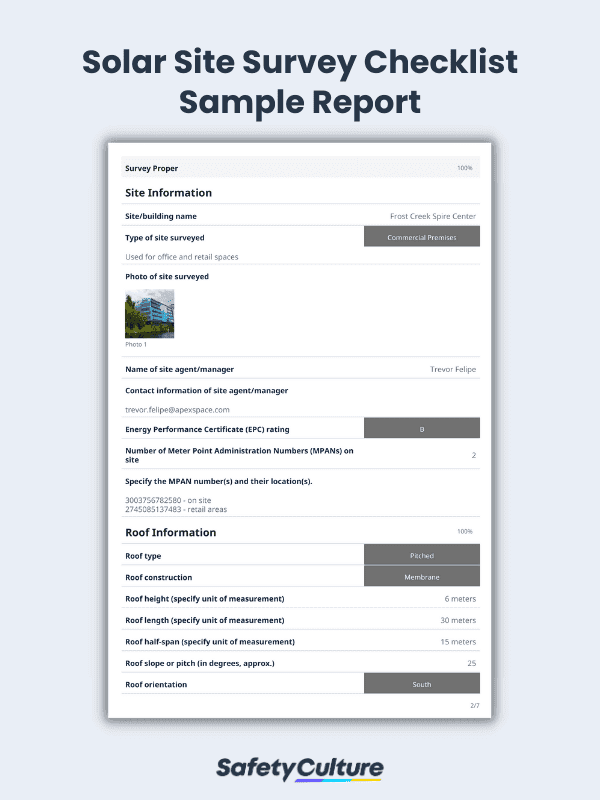What is a Solar Site Survey Checklist?
A solar site survey checklist is a tool that solar installers use to perform comprehensive surveys of a prospective installation site. It outlines all essential areas to assess during the process, such as the roof’s condition, material, orientation, and amount of shading. This checklist ensures that all necessary aspects of the site are evaluated without overlooking any item.
Importance & Benefits
Solar power has become increasingly popular as businesses seek cleaner alternatives to fossil fuels and other non-renewable energy sources. But before making the switch, it’s important to know if your area is conducive to solar power. This is where site surveys come into the picture.
In a nutshell, a solar site survey assesses a particular location to determine its feasibility for solar installation. It examines the potential energy output of the site based on several factors and identifies potential obstructions that may impact the performance of the solar panels.
Using a checklist is incredibly helpful when conducting site surveys. For one, it streamlines the survey process for installers since the list of items to evaluate is readily available to them. Not only does this speed up the process, but it also ensures that no item is missed.
In turn, a comprehensive site survey leads to better outcomes for the solar installation process. After all, the survey imparts valuable insights into the optimal location for setting up these solar facilities for maximum energy output. By having a solid grasp of the site’s characteristics, solar installers can readily prepare the site and carry out the process in an efficient, cost-effective, and safe manner.
Key Elements
When creating a solar site survey checklist, it’s essential to include the following sections:
- Site information – Start your survey by providing a general overview of the location where solar panels are to be installed. Details such as the building name, type, and person(s) in charge are a great place to start.
- Roof information – After scouting the location, the next step is to examine the roof of the building or site. Specify its type, construction, measurements, slope, orientation, level of shading, and other relevant information.
- Main AC connection point – Next, locate the main electrical power supply in the site or building. Take note of its phase type and fuse rating.
- Inverter location and fixing details – Then, identify where the inverters are located and describe their characteristics.
- Remote monitoring – Determine the monitoring system to be established once the solar power is installed, including its network type and location.
- Assessment – Lastly, answer a series of questions to evaluate if the site is capable of handling solar power. Aside from the roof’s structure, it’s also important to check other criteria, such as sunlight exposure, zoning regulations, and electrical consumption.
How to Conduct a Solar Site Survey Using a Checklist
As mentioned earlier, solar site surveys become more efficient with the help of a checklist. Here is a step-by-step guide on using this helpful tool when performing site surveys for solar panels:
- Perform a preliminary site assessment – Begin by taking note of the location and orientation of the property, along with the potential sunlight blockers around the area.
- Collect energy consumption data – Next, identify the amount of energy occupants consume on a daily basis and the peak hours of energy use. This information helps determine the size and number of solar panels needed to meet energy demands.
- Gather information using digital tools – Digital checklists allow you to efficiently note your observations using your mobile device, take photos of the site for reference, and store completed forms in a secure location for future use. The image below shows an example of a solar site survey report that’s generated using an online platform:
- Analyze your findings – After completing the survey, the final step is to make sense of the data you collected. It involves calculating the potential energy production of the solar panels, installation costs, and potential energy savings over time.
FAQs about Solar Site Surveys
Who typically performs a solar site survey?
How long does a solar site survey usually take?
What makes a good solar site?




